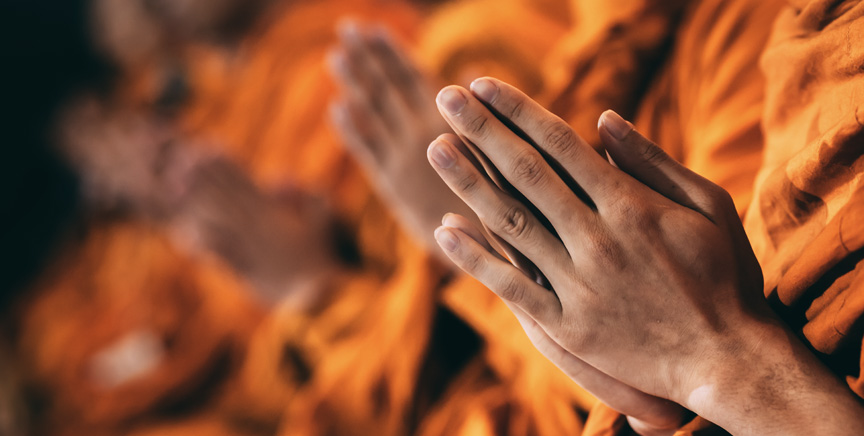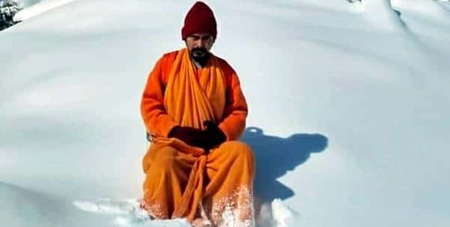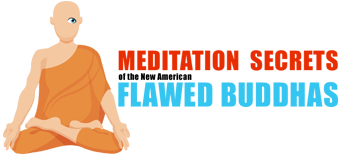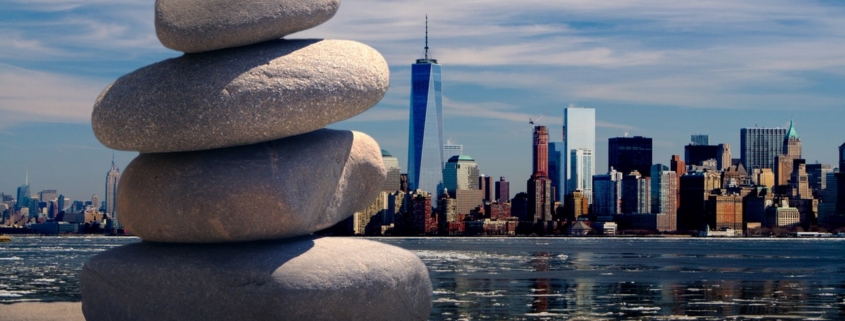Last Updated on March 18, 2021 by Paul Farrell, MRP, JD, PhD

The Relaxation response… Traditional sitting meditation evolved for 4,600 years, then suddenly rebranded by harvard m.d.
“The relaxation response can be elicited by a number of meditative techniques …
There are two basic and necessary steps which I found to be present in practices in every culture:
the repetition of a sound, word, phrase or prayer; and the passive setting aside of intruding thoughts and returning to the repetition.”
– Dr. Herbert Benson, The Science of Meditation Psychology Today
Dr. Herbert Benson is acknowledged as America’s leading pioneer in the field of stress management. Three decades ago this no-nonsense medical doctor surveyed the impact of stress on physical health, emotional well-being and workplace productivity and concluded that we had an epidemic on our hands – with 60-90 percent of all doctor visits the result of stress-related conditions.
When he wrote The Relaxation Response back the mid-seventies he was building on a couple decades of research at Harvard Mind/Body Medical Institute – he had surveyed stress problems, meditation and stress reduction techniques going back 4,600 years. He also noted that in recent times, although technology “was supposed to make life easier for people, it often seems to intensify the stress in our day-to-day existence.” Fortunately, in meditation Benson discovered a proven, low-tech solution that effectively reduced stress.
Relaxation Response Repackaged Ancient Meditation as Contemporary Cure
Back in the seventies, however, the word “meditation” conjured up too many images of new age gurus, spaced-out hippies, beat generation poets and Eastern swamis. But in a marketing tour de force Dr. Benson set aside the “meditation” name-tag and repackaged “meditation” as the “relaxation response.”
And thanks in part to that brilliant move, the book sold millions of copies and made sitting meditation acceptable to mainstream Americans.
Two Simple Steps
Secondly, Benson’s “relaxation response” approach was also brilliant in the way he was able to summarize the essence of all sitting meditation practices into just two simple steps that anyone anywhere could easily grasp and follow – just two simple steps that he “found to be present in practices in every culture” throughout history and across the world.
In other words, the relaxation response was not some new gimmick, but a universal path that has a proven track-record going back thousands of years, embracing all continents, nations, religions and historical periods, which explains why it works at such a basic human level.
The Relaxation Response is Simply Sitting Meditation
Benson’s formula is deceptively simple to grasp. First, let’s review the ultra-basic two-step short-form of his relaxation response. It consists of “the repetition of a sound, word, phrase or prayer; and the passive setting aside of intruding thoughts and returning to the repetition.”
Now do you think the relaxation response is a bit too simple? In fact, most just can’t believe anything so simple could possibly reduce their stress.
Does Technology Make Life More Peaceful or Increase Stress?
So what do people do in today’s high-tech era to accelerate the process? They run out and buy meditation tapes based on ads that promise you’ll be able to “meditate deeper than a Zen monk, literally at the touch of a button.” Then they buy high-tech sound systems, DVD players, headphones, cushions, bells, incense, oriental rugs, and other props before they even begin meditating, believing that all the high-tech equipment and ritualistic props are what meditation is all about.
Our modern minds are so steeped in quick fixes, sophisticated theories, vicarious experiences and the hottest new technologies that we find it hard to believe anything could be so simple – and that’s the problem!
Our complex high-tech high-speed world is creating most of our stress problems, not making life easier and more peaceful. Some experts estimate that the daily New York Times has more information than a person would see in a lifetime back in medieval days before the invention of the Guttenberg press. No wonder we’re overloaded, overwhelmed and over-stressed.
Everything You Need to Know for a Sitting Meditation
We need to simplify life and slow down. In short, we need tools that work like the relaxation response! The book has sold millions of copies, so we know Benson’s doing something right. Here’s the good doctor’s simple prescription:
- Pick a focus word, phrase, or prayer rooted in your belief system.
- Sit, get comfortable and close your eyes.
- Relax your muscles. Start with your feet, works slowly up to your head.
- Breathe naturally and say your focus word as you exhale.
- Keep a passive attitude. Don’t worry about how well you’re doing. And if any thoughts come to mind, simply say, “Oh well,” and gently return to your repetition.
- Keep doing it for ten to twenty minutes. When you’re done, sit quietly for a minute, let your thoughts come back before opening your eyes, then sit for another minute before standing.
- Practice this technique one or two times a day, whenever convenient.
Some years later, after striking up a friendship with the Dalai Lama, Benson made several trips to India where his team studied the mediation practices of exiled Tibetan monks.
Harvard Doctor Goes to India Improves on Relaxation Response

When Dr. Herbert Benson went to India to improve the relaxation response he witnessed monks who were able to raise their body temperature to survive the freezing temperatures.
While in India, Benson’s team “witnessed incredible mind/body feats” done by the monks, such as raising their body temperature sufficient to survive in freezing weather cloaked only in a loin cloth. After that he began teaching his patients a revised two-step meditation process to reproduce what the monks were able to achieve:
“First you evoke the Relaxation Response and reap its healthy rewards. Then, when your mind is quieter, when focusing has opened a door in your mind, visualize an outcome that is meaningful to you … If you are concerned with your performance at work or on the golf course or tennis court, imagine yourself performing well in those venues. Whatever your goal, these two steps can be powerful, allowing yourself to reap the benefits of the Relaxation Response and take advantage of a quiet mind to rewire thoughts and actions in desired directions.”
In short, sitting may not be the best way to meditate.
Bottom line: The relaxation response is sitting meditation at its simplest and most effective, a perfect stress reduction tool. And for many, the benefits will be experienced almost immediately – without a lot of expensive props and high-tech equipment. Just do it and you will slow down, feel a sense of calm and peace of mind, and be able to work more effectively and productively.
Beyond Sitting Meditation There is a New World of Peak Experiences

The Relaxation Response broke down sitting meditation into 2 simple steps. Try it! Sitting meditation may be right for you.
Try it. Experiment. You may want to start with sitting meditation. It may turn out to be the best one for you. And if this fits your personality, once you have a solid foundation in the relaxation response, take Benson’s advanced action-oriented course on “the spirit of peak performance” in his latest book, The Breakout Principle, coauthored with William Proctor.
Benson calls his new breakout principle the “ultimate self-help principle.” In the new Breakout Principle he discusses the six major life-cycle “triggers” that help people go beyond the basic stress reduction benefits of meditation and the relaxation response, and into a new level of awareness – a breakout – which is also not a new concept but rather a description of a profound experience that has been described by spiritual masters in various ways throughout history – as an epiphany, higher consciousness, an awakening, enlightenment, satori, ah ha! and other familiar names.
A More Energized Life
Following successive breakout experiences, Benson says the meditator moves into a more energized life filled with peak experiences – in productivity, health, athletics, self-awareness, creativity, altruism, and total transformation. In reality, the breakout experience has been with us all along as a natural result of any regular practice of the relaxation response, and indeed the natural result of all meditation practices for thousands of years.
If you want more specific examples you’ll find them within – turn to our sections on the Sports-Fitness Zone, the Creativity Zone and the Relationship Zone – for lots of examples of meditation methods that are already being used by the four-out-of-five Americans who have discovered that sitting meditation isn’t the best kind of meditation for them.
About the Author
Dr. Farrell is a Behavioral Economist. His books include The Millionaire Code; The Millionaire Meditation: Stress Management for Wall Street, Corporate America & Entrepreneurs; The Zen Millionaire; The Winning Portfolio; Expert Investing on The Net; Mutual Funds on The Net; and The Lazy Person’s Guide to Investing.
He also published 1,643 columns on DowJones-MarketWatch and for years was their #1 traffic-generating columnist. Before the Internet, he edited & published FNX: Future News Index, a financial newsletter for stock market traders. Earlier he was a Wall Street investment banker with Morgan Stanley, Executive Vice President of the Financial News Network; and Associate Editor of the Los Angeles Herald Examiner.
He has a Doctorate in Psychology, Juris Doctor, Masters in Regional Planning and Bachelor of Architecture. He worked on the Esalen organic farm and served in the U.S. Marine Corps as Staff Sergeant in aviation computer technology.








